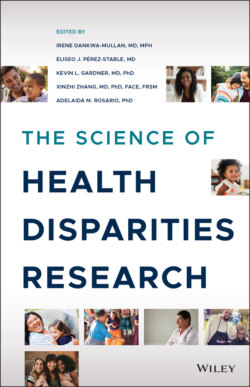Читать книгу The Science of Health Disparities Research - Группа авторов - Страница 30
2.3 The HPA Axis
ОглавлениеThe HPA axis wields a pervasive influence on health behaviors, including diet, physical activity, and sleep [4, 5]. The paraventricular nucleus (PVN) is a core component of the HPA axis. In response to stress, its neurons produce corticotropin releasing factor (CRF) to stimulate release of pituitary adrenal corticotropic hormone (ACTH), which stimulates production of glucocorticoids (predominantly cortisol) from the adrenal cortex (Figure 2.2) [4, 5]. The net result of the release of circulating cortisol is to mobilize energy through gluconeogenesis, cause peripheral inhibition of glucose and amino acid uptake, and impair or blunt the immune inflammatory response [5]. The result is a rapid increase in blood glucose that will persist under conditions of chronic stress. Cortisol also has significant influence on the central nervous system through feedback inhibition of pituitary ACTH secretion and production of CRF from the PVN, in addition to significant influence on neurogenesis in the amygdala, hippocampus, and mesocorticolimbic regions (Figure 2.2).
Figure 2.2 Schematic presentation of stress pathway outputs and inputs to the hypothalamic‐pituitary‐adrenal (HPA) axis in response to stress. NE, norepinephrine; CRF, corticotropin releasing factor; PVN, paraventricular nucleus; ACTH, adreno‐corticotropin.
Source: Derived in part from Spencer and Deak [9].
CRF also acts at the level of the locus coeruleus (LC) to potentiate the secretion of norepinephrine (NE), which works in combination with cortisol to enhance consolidation and retrieval of highly emotional events through their combined influence on neurogenesis in the hippocampus, amygdala, and the mesocorticolimbic system (Figure 2.2) [3]. LC‐derived NE also enhances peripheral levels of NE through stimulation of the adrenal medulla, resulting in significant changes in the cardiovascular, pulmonary, renal, gastrointestinal, immune, and hepatic tissues [4, 5].
